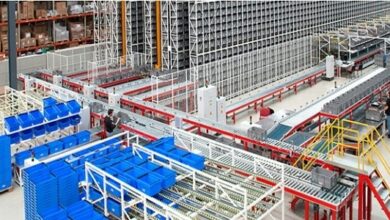Connecting India: Airports and Their Impact on Regional Development

India, one of the world’s fastest-growing major economies, is experiencing a significant transformation in its transportation infrastructure. The development of airports nationwide has been a pivotal factor in this transformation. Airports facilitate air travel and play a crucial role in stimulating regional development. Today, there is a substantial total airport in India, with airports scattered across the length and breadth of the country. This article explores how airports connect India and fuel growth in various regions.
Airports as Gateways to Progress
Airports as Economic Hubs
Airports have emerged as economic hubs, driving growth in the regions they serve. Major international airports like Delhi’s Indira Gandhi International Airport and Mumbai’s Chhatrapati Shivaji Maharaj International Airport have become international trade and investment gateways. They facilitate the movement of goods and services, attracting industries and businesses to the region.
Job Creation and Skilling Opportunities
The aviation sector generates employment opportunities in various fields, from airline operations to ground handling, security, and retail. The presence of airports leads to job creation and skilling opportunities for residents. This not only reduces unemployment but also enhances the skills and employability of the workforce.
Enhancing Connectivity and Tourism
Improved Regional Connectivity
Airports have brought remote and underserved regions of India into the national and global mainstream. Airports in tier-2 and tier-3 cities have enhanced connectivity, making it easier for people to travel for business, education, and leisure. The Udaan scheme launched by the government has played a vital role in connecting these regions.
Tourism Boost
The development of airports has given a significant boost to tourism. Popular tourist destinations like Goa, Kerala, and Rajasthan have experienced increased footfall due to better air connectivity. This cascades the local economy, leading to the growth of hospitality, travel, and related industries.
Infrastructural Advancements
Transportation Links
Airports often serve as transportation hubs, linking different modes of transport such as road and rail. This integrated approach improves overall connectivity, making it convenient for passengers to move seamlessly between modes of transportation.
Smart Cities and Urban Planning
Many airports are being developed as part of innovative city initiatives. This involves building modern terminals and developing surrounding areas with advanced infrastructure, including better roads, public transportation, and urban amenities. This holistic approach to urban planning enhances residents’ overall quality of life.
Challenges and Sustainability
Environmental Concerns
The rapid growth of aviation in India has raised environmental concerns, particularly regarding greenhouse gas emissions. Balancing the economic benefits of airports with sustainability goals is a challenge that policymakers and stakeholders must address.
Infrastructure Maintenance and Expansion
To sustain growth, airports require continuous maintenance and expansion. This often involves significant investments in infrastructure. Ensuring efficient management of these resources is crucial to avoid bottlenecks and delays.
Regional Case Studies
Chennai International Airport: The Southern Gateway
Chennai International Airport has emerged as a vital southern gateway for India. It is a critical connection point for international travellers and supports the region’s automobile and manufacturing industries. Its strategic location has boosted economic activity in Tamil Nadu and neighbouring states.
Indore’s Devi Ahilya Bai Holkar Airport: A Model for Regional Connectivity
The Devi Ahilya Bai Holkar Airport in Indore exemplifies the impact of airports on regional development. Enhanced air connectivity has led to increased industrial investments in the region. This airport’s success serves as a model for tier-2 and tier-3 cities seeking to harness the economic benefits of aviation.
In Conclusion
A significant network of the total airport in India has facilitated air travel and profoundly impacted regional development. Airports connect India, stimulate economic development, and enhance regional connectivity. However, addressing environmental concerns and ensuring sustainable growth are critical challenges that need to be addressed. As India continues its journey towards becoming a global economic powerhouse, the strategic development of airports will remain a crucial component of its progress.



